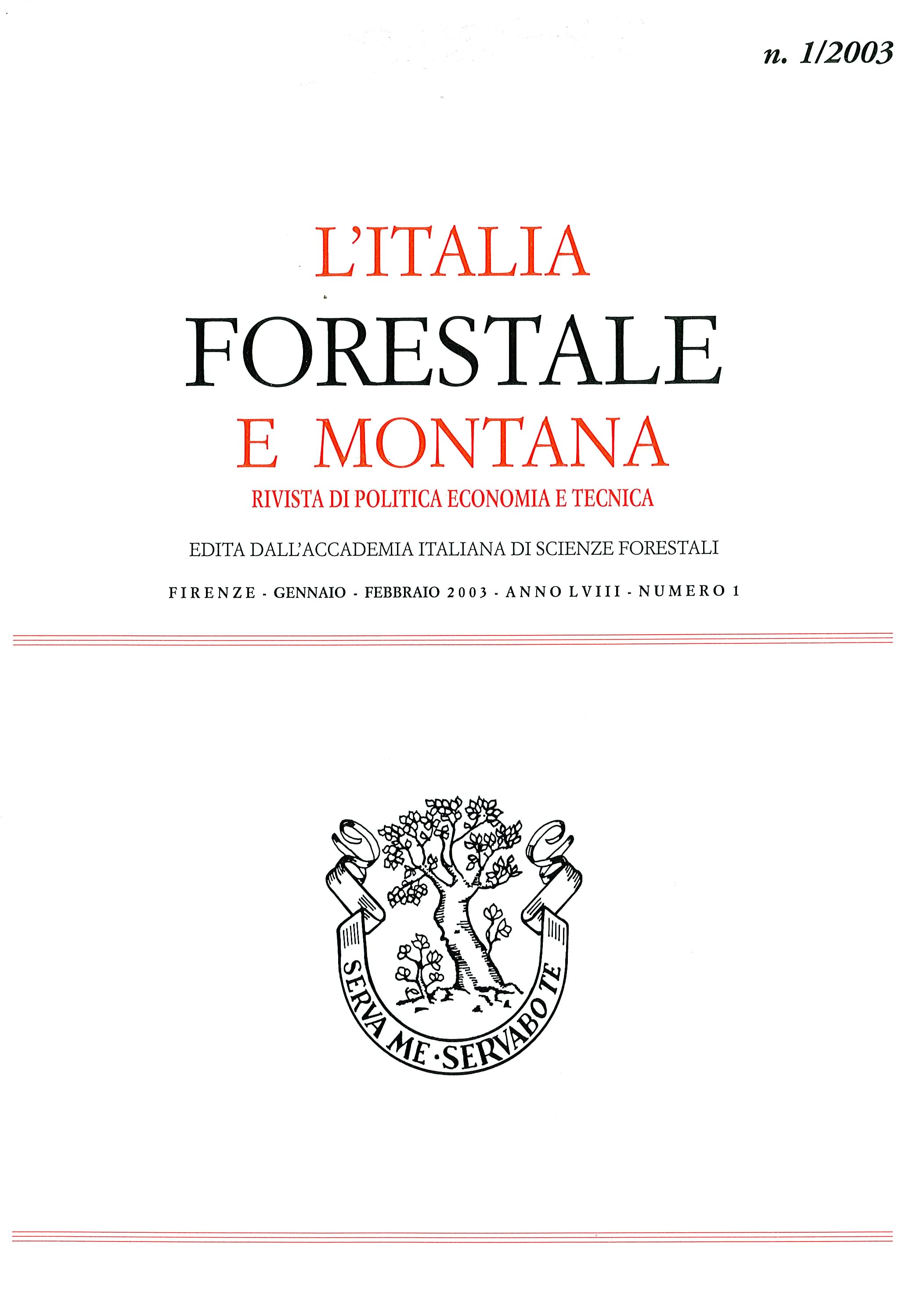Light microclimate, natural regeneration and spatial pattern of Abies alba Mill. in the ‘Abetina di Laurenzana’, Basilicata, Southern Italy
Published 2003-02-28
Keywords
- light microclimate,
- natural regeneration,
- spatial pattern,
- Abies alba Mill.,
- Basilicata Region
Copyright (c) 2013 Italian Journal of Forest and Mountain Environments

This work is licensed under a Creative Commons Attribution-NonCommercial 4.0 International License.
Abstract
The composition and structure of a mixed Quercus cerris-Abies alba forest, growing in the submontane belt, was monitored in a 100×50 m experimental area in the ‘Abetina di Laurenzana’, Basilicata, Southern Italy. Light microclimate under the canopy was characterized in terms of relative irradiance and red/far red ratio. The socalled light factor (ratio between apical shoot length and length of first whorl lateral twigs) was measured on naturally recruited Abies alba plants. Spatial autocorrelation analysis was applied to evaluate aggregation patterns. An exponential relationship was observed between relative irradiance and red/far red ratio under the canopy. Both variables showed large spatial variation as a function of canopy characteristics. An increase of light factor was observed with plant height. Abies alba prevails in terms of number of plants and basal area. Diameter distribution, which was different between the two species, is typical of a forest stand in which crowns are continuously distributed along the profile. Spatial autocorrelograms were mostly flat; they can be reconciled with a community structure where seedlings recruitment is a continuous process and groups of plants of different age and dimension tend to form. In such a condition silvicultural practices cannot be uniform in space but should carefully consider the spatial variation of natural regeneration, which is driven by below-canopy light microclimate.

